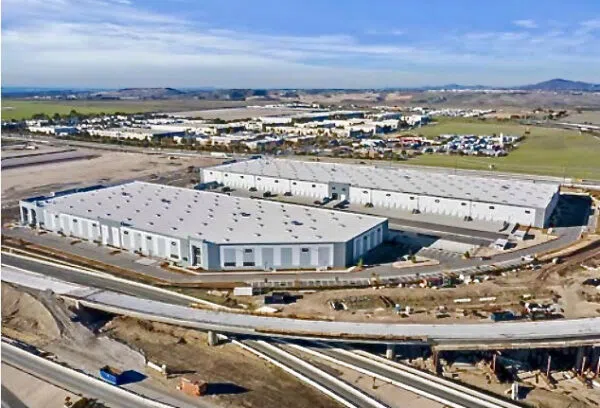The area near the Otay Mesa port of entry continues to be a Southern California industrial real estate hot spot.
Developer Majestic Realty Co. has begun construction on the second phase of its Landmark at Otay development being built near the U.S.-Mexico border just south of San Diego.
“Demand for real estate in the Otay Mesa area is white hot right now,” Tom Simmons, vice president of Los Angeles-based Majestic Realty Co., told FreightWaves.
The San Diego/Otay Mesa market is reaching “historic levels” of demand for industrial real estate, according to market research from Marcus and Millichap.
“San Diego’s industrial sector entered 2022 on a high note after users absorbed 6.4 million square feet in the second half of last year — a figure that exceeded the total from the prior 15 quarters,” Marcus & Millichap said. “Heightened demand for warehouse and distribution space near the U.S.-Mexico border fueled this strong level of absorption with e-commerce retailers and logistics providers inking leases in Otay Mesa.”
Marcus and Millichap said Otay Mesa vacancy rates are below 3%, compared to the national vacancy rate average of 5.2%. The average rent in the area is forecast to be about $17.75 per square foot in 2022.
Simmons said another reason they are seeing increased demand in the area is because availability is running out.
“San Diego is running out of real estate,” Simmons said. “It has some significant geographical constraints; obviously you have the Pacific Ocean in the west and you have the border to the south.

There’s also significant terrain from essentially mountains to the east and then Camp Pendleton military installation, which is on the northern boundary of San Diego County.”
The Otay Mesa port of entry totaled more than $50 billion in trade in 2021. It ranked as the second-busiest Mexico border crossing last year with more than 936,000 commercial trucks. The top commercial land crossing with Mexico in 2021 was Laredo, Texas, processing more than 2.5 million trucks.
The Otay Mesa port of entry is also undergoing a $1.1 billion expansion to build a third port of entry in the area, which will be known as Otay Mesa East or Otay II. The nearby San Ysidro port of entry processes passenger vehicles only.
Otay II will create a new crossing 3 miles east of the original Otay Mesa port of entry. Otay II will include 10 lanes, five for passenger vehicles and five for cargo transport.
The goal is to reduce wait times for trucks at the Otay Mesa border crossing to a 20-minute average. Current wait times average 150 minutes for commercial vehicles. Otay II is scheduled to be completed in 2024.
Simmons said Majestic Realty Co. and Sunroad Enterprises have begun construction on the second phase of Landmark at Otay to take advantage of the increased demand for space.
Phase II construction is taking place on 50 acres of the 67-acre development and includes a 240,975-square-foot building and 235,085-square-foot building. Both facilities will feature 36-foot ceiling clearance and 185-foot truck courtyard with individual trailer storage.
Each building will also include parking for 51 trailers, 40 dock-high doors, and two ground-level doors with ramps. Construction is scheduled for completion in February 2023. Tenants at Landmark at Otay already include Global Logistics & Fulfillment, Exportalia, Avanza Loop, and Terry Town.
“We are seeing a lot of interest from cross-border companies,” Simmons said. “If everything goes according to plan and the new Otay border crossing opens in 2024, that will add another commercial border crossing to serve the California market and we’re seeing these cross-border companies make sure they’re getting their investments in now.”
FreightWaves’ SONAR platform shows the West Coast regional tender rejection rates (OTRI.URWT) have plummeted as carriers rush to Southern California to take advantage of elevated truckload rates, miles and volumes.
Tender rejection rates measure the rate at which trucking companies accept their electronically submitted load requests from their contracted shippers. Since the beginning of January, tender rejection rates have fallen from near 19% to 4% on the West Coast.
Original Article: Transport Magazine